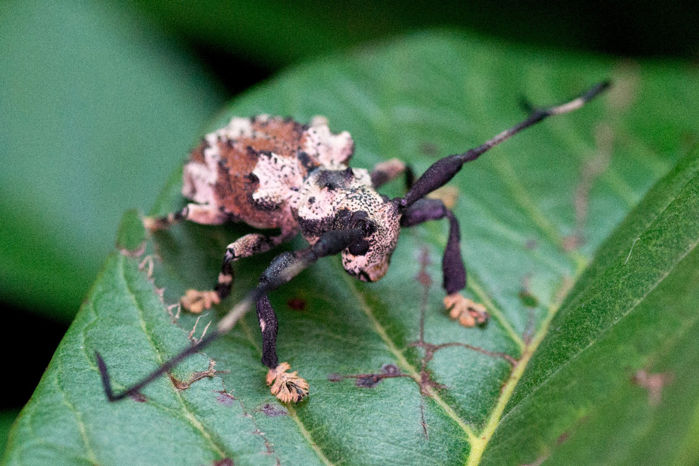Beetles are generally regarded as harmless to humans. Out of the over 350,000 documented species of beetle, only three are actually known to bite people, and only if they feel threatened. However, there is another species that few sources mention. Onychocerus albitarsis, aka Scorpion Beetle, is the only known insect capable of stinging humans with its antennae and delivering a painful toxin.
First described in 1859 by famous English entomologist Francis Polkinghorne Pascoe, the scorpion beetle is considered by many experts a fascinating case of convergent evolution. While all other known insects deliver venom or toxins by biting with fangs or stinging with a structure used exclusively for this purpose, e.g. a bee’s stinger, the scorpion beetle does it through its two long antennae, which research has shown have evolved to closely resemble a scorpion’s segmented tail.

Photo: Antonio Sforcin Amaral / Personal Archive
“We here report the first known case of a cerambycid beetle using its antennae to inject a secretion that causes cutaneous and subcutaneous inflammation in humans,” a 2008 study on the toxin delivery mechanism of the scorpion beetle states. “Scanning electron microscopy revealed that the terminal antennal segment of Onychocerus albitarsis has two pores opening into channels leading to the tip through which the secretion is delivered. The delivery system is almost identical to that found in the stinger of a deadly buthid scorpion.”
Documented cases of people stung by scorpion beetles are rare, and because of the elusive nature of this insect little is known about the toxin it injects via its antennae. There are currently only three known reports of scorpion beetle stings on humans, one from a rural area in Peru and two from the state of Sao Paolo, Brazil, none of which proved lethal.
In the case of a Brazilian woman stung by Onychocerus albitarsis, a very sharp pain, as well as redness and itchiness around the area of the sting were reported for a period of 24 hours, while in the case of a man from Sao Paolo, these symptoms disappeared shortly after the sting occurred. Further research on the composition of the toxin and its effects on human males and females is needed.
“When it feels threatened, the scorpion beetle directs its antennae in the direction that the threat is coming from. This resembles the behavior of a scorpion and therefore the name: both because of the way it tries to inoculate aggressors and the aspect of its antennae,” Brazilian zoologist Antonio Lucas Sforcin Amaral, from the State University of São Paulo, told G1.
Although the potency of the toxin injected by the scorpion beetle is yet unknown, most experts agree that it is incapable of killing humans, unlike the venom of a buthid scorpion. Still, people are advised to avoid touching scorpion beetles due to the sharp pain their sting causes and the potential of an allergic reaction.
So far, scorpion beetles have only been spotted in Peru and Brazil. They are around two centimeters-long and can be recognized by their long antennae and a white, gray, brown and black body.












